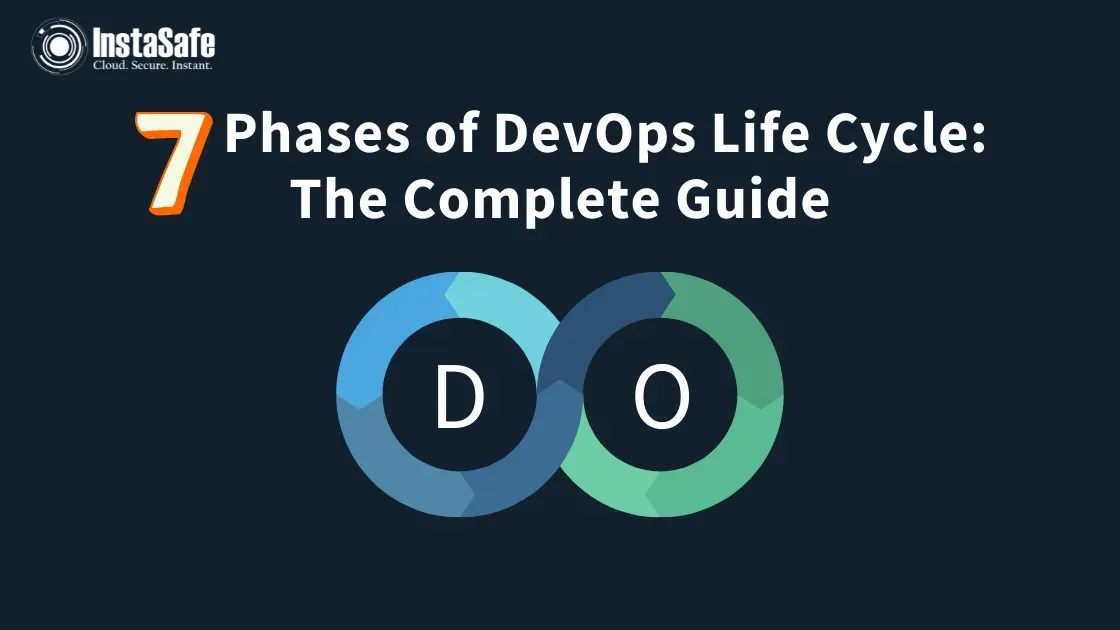7 Phases of DevOps Life Cycle: The Complete Guide

Ensuring efficient collaboration and communication between your development and operations teams is the key to success—especially in today’s remote working environment.
As the name suggests, DevOps connects your company’s operations and development teams to streamline processes, enable quality assurance, and improve your company’s ability to deliver services and products efficiently.
Several businesses like Netflix embrace DevOps development lifecycle management for seamless software operations and development—while ensuring high quality and successful product delivery.
Suppose you’re looking to automate your development workflow and just start with DevOps. In that case, we will share what the DevOps complete lifecycle is and the seven critical phases you should know for your organisation.
What Is DevOps Lifecycle?
The DevOps lifecycle is a series of seven automated stages and development processes—a novel and efficient approach to application development.
A DevOps lifecycle follows a continuous loop to represent collaborative workflow and increase the application’s performance. Moreover, the lifecycle allows users to provide feedback and suggestions throughout the development process.
Thus, it’s an agile, scalable, and highly affordable process to improve your product’s quality, delivery, and the DevOps team’s productivity. Now, let’s get into the seven essential stages of the DevOps lifecycle.
7 Stages of The DevOps Lifecycle
Each lifecycle of DevOps works in a continuous phase—from planning to monitoring. So, here’s a breakdown of the entire DevOps lifecycle, which enables continuity and efficiency.
Continuous Development
Continuous development comprises software planning and coding—basically outlining the entire software development lifecycle vision to speed up the software development process.
This stage includes gathering the project requirements, discussing them with the stakeholders, maintaining the product backlog based on customer feedback, and understanding the overall project objective.
Once the stakeholders and teams agree on the business needs—the development team begins with the coding process and performs modifications whenever needed. Developers maintain the code using source code management and maintenance tools like Jira, Mercurial, SVN, or GIT.
Continuous integration
Continuous Integration (CI) is the phase where developers develop updated code or integrate add-on features and functionalities.
Thus, this stage becomes the focal point for continuously integrating new code functionalities into the old source code and resolving code conflicts due to frequent changes.
Moreover, developers also detect bugs at each step through unit testing and plan the tests needed for the next stage.
Continuous Testing
Once the new code is developed, it is examined and tested in the continuous testing stage. In this phase, quality analysts continuously test the software for issues and bugs using Docker containers to ensure the software matches the client’s requirements.
If analysts find errors or bugs—they send the code back to the integration stage for modification. Such automation testing minimises effort and the time required to deliver quality results—enhancing test evaluation reports and reducing the maintenance costs and provisioning of the test environment.
Testers use tools like Selenium, JUnit, and TestNG in this stage of DevOps application security testing and lifecycle management.
Continuous Deployment
Continuous deployment is where the final software code is deployed on the production servers. It includes configuration management and hassle-free product deployment—ensuring accurate and smooth deployment without impacting the software’s performance.
The code is released to the servers, and the development team schedules updates—keeping the configuration consistent through the entire production cycle.
Teams also use containerisation tools in the deployment process to ensure consistency in the development, testing, staging, and production environments.
Continuous Feedback
Continuous feedback helps analyse and evaluate the application code to improve it further. In addition, it regularly evaluates customer behaviour at each stage of the software release to enhance future deployments and releases.
You can either opt for a structural approach (collecting feedback through surveys and questionnaires) or an unstructured approach (collecting feedback through social media platforms) to include suggestions and release better software versions.
Continuous Monitoring
Continuous monitoring includes monitoring the application’s features and functionalities to determine the overall product efficacy and detect system errors like non-reachable servers or low memory.
It helps the IT teams quickly identify issues in the software performance and the root cause of those issues. If the team finds major issues, the application goes through the entire DevOps cycle again. However, most issues are resolved automatically in this stage.
Tools like Kibana, Nagios, and Splunk make the continuous monitoring phase easier and faster.
Continuous Operations
The final phase of the DevOps lifecycle is critical for reducing planned downtime and scheduled maintenance.
Continuous operations automate launch and release processes, spot errors promptly, and create better software versions—to reduce update downtimes and lost business opportunities.
This stage has a shorter development lifecycle, and teams use tools like Docker Swarm and Kubernetes to eliminate downtime.
Get Started With InstaSafe’s Secure DevOps Access
The DevOps lifecycle establishes an efficient software development culture—ensuring high-quality production and release. It maintains continuity and optimises automation with effective collaboration between the development and operations teams to improve the user experience.
At the InstaSafe company, we offer a Secure DevOps Access solution with Zero Trust to enable seamless collaboration between your development and operations teams while ensuring high DevOps security.So, make sure you check out the service or book a demo to see how it works.
Key Products
Multi Factor Authentication | Identity And Access Management | ZTNA | Zero Trust Application Access | Secure Enterprise Browser
Key Features
Single Sign On | Endpoint Security | Device Binding | Domain Joining | Always On VPN | Contextual Access | Clientless Remote Access | Device Posture Check
Key Solutions
VPN Alternatives | DevOps Security | Cloud Application Security | Secure Remote Access | VoIP Security
